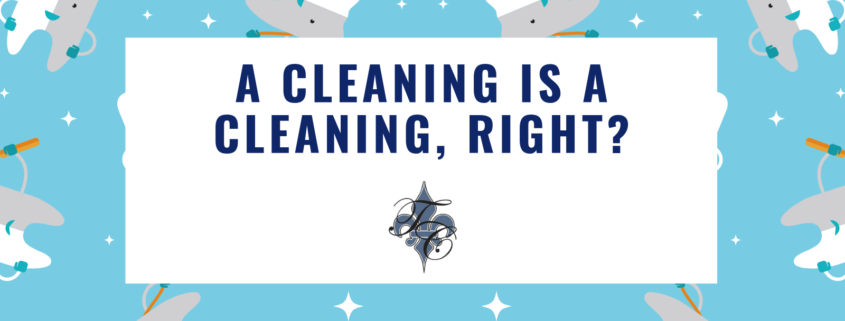A cleaning is a cleaning, right?
Going to the dentist for teeth cleanings and checkups twice a year may not be the most fun thing on your calendar, but failing to do so can result in even more inconvenient — and more painful — trips to the dentist down the road.
The longer you go without regular cleanings, the greater your chances for having to get a deep teeth cleaning. Although many people think “a cleaning is a cleaning,” a deep cleaning is much different than a regular cleaning. Here’s how.
What is a deep cleaning?
Dental professionals often refer to deep cleanings as scaling and root planing. The process involves not only removing plaque and tartar from the surface of your teeth, but also from the “pocket” between your teeth and gums.
How can a hygienist tell if you need a cleaning? He or she will use a probe and measure the area around your teeth. “Pockets” occur when bacteria has built up in between your teeth and gums.
According to the American Academy of Periodontology, a “pocket” occurs when the space between your teeth and gums is five millimeters or more, but ideally those “pockets” won’t be more than three millimeters. These bacteria-filled pockets can lead to gum diseases or other more serious periodontal issues.
If it’s found that you need a deep cleaning, you’ll have to get it done in two separate appointments, and it typically will involve a numbing agent. The deep cleaning will be done with an electric ultrasonic instrument — or a manual scaling tool.
Sometimes, the dentist will have you return for a follow-up appointment after your deep cleaning to make sure those “pockets” are healthier than they were before they were scaled. If the deep clean didn’t eliminate the bacteria, then you might have to see a periodontist
What if I don’t need a deep cleaning?
If your dentist concludes that you don’t need a deep cleaning, then you’ll sit through a regular cleaning, which is less invasive. Here’s what to expect:
- A dental hygienist will use a set of ultrasonic tools to clean your teeth. He or she will work to get rid of plaque and tartar on your teeth and along your gum line.
- The hygienist will also floss in between your teeth. If you feel pain or discomfort at any time during the cleaning, let the hygienist know.
- The hygienist will also polish your teeth and then give your mouth a good rinse.
- After the hygienist is done, you might get X-rays done, depending on the last time your mouth was X-rayed.
Whether you need a regular cleaning or a deep cleaning, it’s something you don’t want to put off until later. Your oral health depends on it!
Contact Dr. Tim Chauvin’s office today to schedule an appointment.



